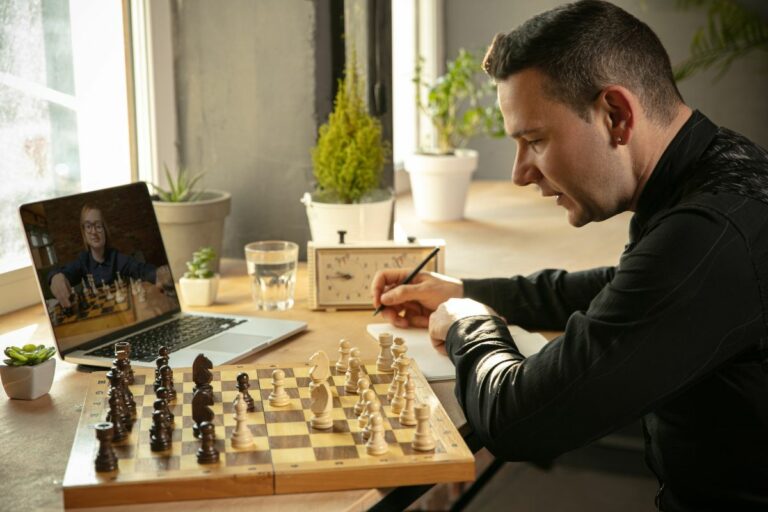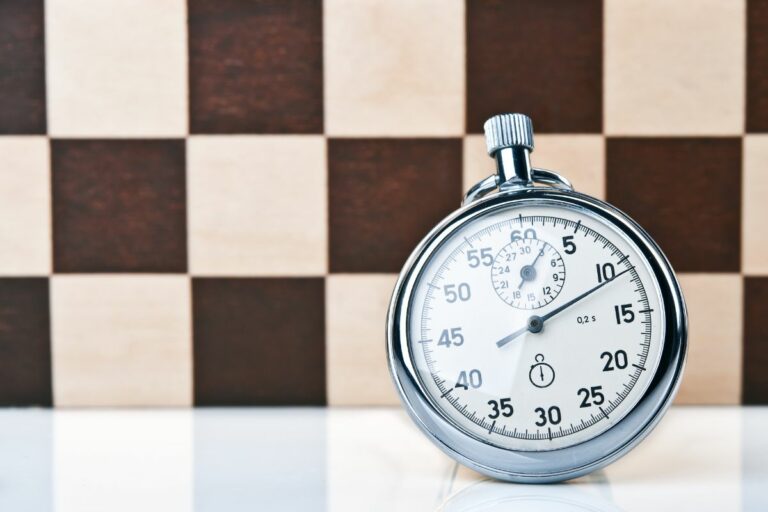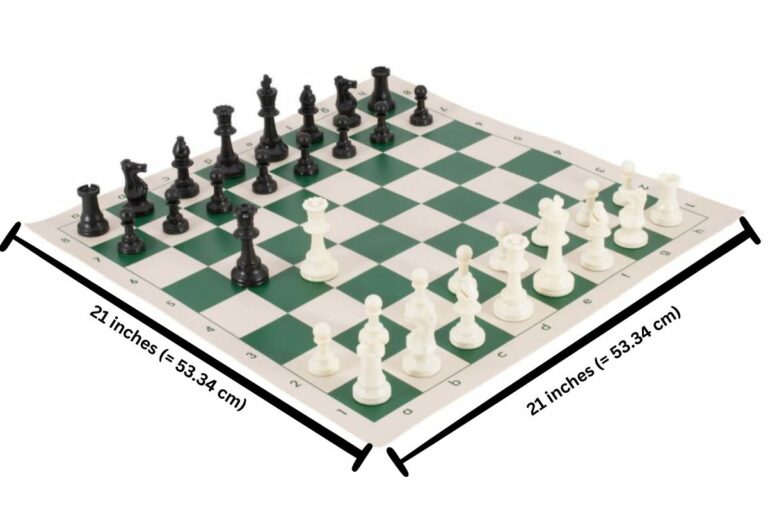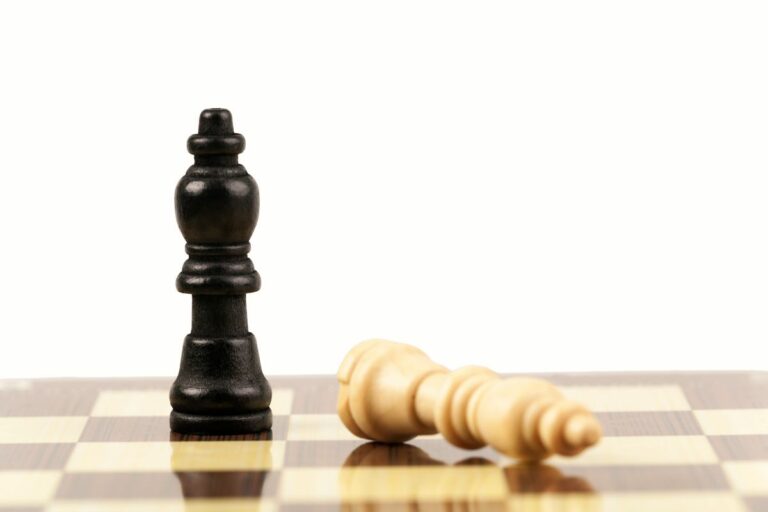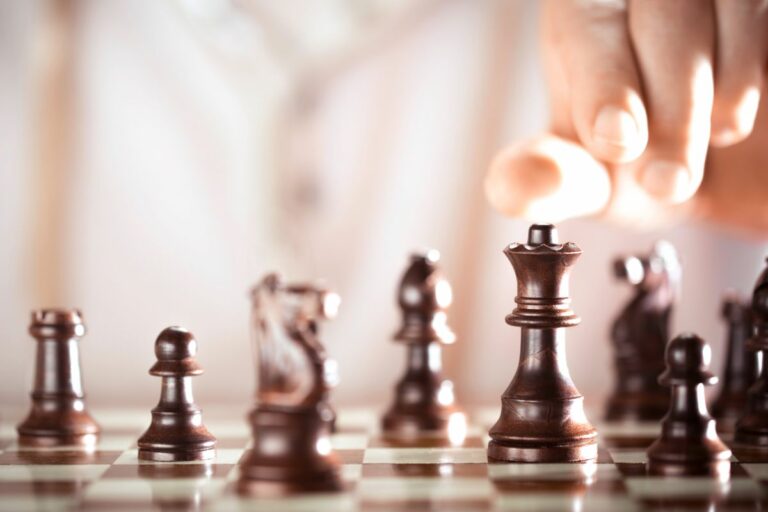The Touch-Move Rule in Chess: Must You Move Any Piece You Touch?
Chess, a game loved for its strategic challenges, has its own set of rules that govern fair play. One of these rules, known as the touch-move rule, plays a crucial role in shaping the game. It’s also one of the rules that can cost you the game if you are not aware of it.
So, what exactly is the touch-move rule in chess, and what is it so important?
The touch-move rule in chess states that if you touch your own piece, you must move it if possible, and if you touch one of your opponent’s pieces, you must capture it. The rule was established long ago to ensure fair play, prevent cheating and manipulation, and add strategic depth to the game.
Keep reading to learn more about the different scenarios for the Touch-Move in chess and how to deal with them.
What Is the Touch-Move Rule in Chess?

The touch-move rule is a fundamental principle in chess that governs the movement of pieces during a game.
According to this rule, if a player intentionally touches one of their own pieces, they must move that piece if it has a legal move available.
Similarly, if a player touches an opponent’s piece, they must capture it if it is a legal move. This applies regardless of the result of the move, so it doesn’t matter if this means you lose a queen or get checkmate, the arbiter will still force you to make the move anyway.
The History of the Touch-Move Rule in Chess
The touch-move rule has been an integral part of chess for many centuries, ensuring fair play and maintaining the integrity of the game.
It became more standardized and universally accepted during the 19th and 20th centuries as modern chess rules were codified. Over time, various chess organizations and governing bodies, such as FIDE (Fédération Internationale des Échecs), further reinforced the touch-move rule in their official regulations.
While the touch-move rule itself has remained relatively stable throughout history, its application and specific details may vary slightly based on tournament rules and local customs. Nevertheless, the fundamental principle remains consistent – once a player intentionally touches a piece, they must move it if it has a legal move available.
This article was originally published on A2zchess.com, if found on any other site, it’s stolen.
The Importance of the Touch-Move Rule in Chess
The primary purpose of the touch-move rule is to prevent players from gaining an unfair advantage or manipulating the game.
By enforcing the obligation to move a touched piece, it prevents players from bluffing or changing their minds after touching a piece. This adds a level of accountability and ensures that players carefully consider their moves before physically interacting with the pieces.
The touch-move rule also enhances the strategic depth of the game and introduces an element of risk and forces players to think through their moves before physically executing them. By adhering to this rule, players must be cautious and deliberate in their actions, contributing to the tactical and positional complexity of chess.
Different Scenarios for the Touch-Move Rule in Chess
The touch-move rule in chess has different scenarios that apply to various situations. Let’s explore three common scenarios and how the touch-move rule is applied in each case:
Touching a Piece by Mistake:
If a player unintentionally touches one of their own pieces, the touch-move rule applies.
In this scenario, the player must move the touched piece if it has any legal moves available. This ensures that players are accountable for their actions and cannot simply retract or change their moves after physical contact with a piece, even if it was accidental.
If a player touches one of their opponent’s pieces by mistake, the touch move applies and you must capture this piece with one of your own pieces.
If a player touches two or more pieces
Here, it’s important to understand that what applies here is the logic of the touch move rule itself, so here are the different cases possible:
- If a player touches two of their own pieces: You must move one of them.
- If a player touches two of their opponent’s pieces: You must capture one of them.
- If a player touches a piece of theirs and one of their opponent’s: If you touch a piece of your own and one of your opponent’s, you must capture it with your piece if possible. If not possible, you must choose between moving your piece or capturing your opponent’s.
Touching a Piece That Does Not Have Any Legal Moves:
If a player touches a piece and realizes that it does not have any legal moves available, the touch-move rule still stands. In this case, the player is not obligated to make an illegal move.
However, touching the piece triggers the responsibility to move it if there are any legal moves possible. If no legal moves exist, the player can choose a different piece to move, as long as they have not released the touched piece from their hand.
Touching a Piece When Moving It Will Lead to a Material Loss:
Suppose a player touches an opponent’s piece and realizes that capturing it would result in a material loss, such as capturing a more valuable piece with a less valuable one. In such a scenario, the touch-move rule still applies.
The player must capture the touched piece, as capturing an opponent’s piece is an obligatory move. It is crucial for players to carefully consider the consequences of their moves before physically touching any piece to avoid any potential material loss.
In all these scenarios, the touch-move rule ensures that players commit to their moves once they touch a piece, whether intentionally or accidentally.
Here is an example; Hikaru made a mistake by touching his king, and Aronian forced him through the arbiter that was present to move the king even though it led to his loss:
What Happens If A Player Touches A Piece And Refuses to Move It?
If a player touches a piece and refuses to move it, despite having a legal move available, the touch-move rule is enforced. The consequences may vary depending on the specific circumstances and the tournament regulations in place:
- In casual games or friendly matches, the refusal to move a touched piece may lead to a discussion or a gentle reminder about the touch-move rule. The players may be given an opportunity to rectify the situation and make the required move.
- In organized tournaments or competitive play, the consequences for refusing to move a touched piece can be more severe. The player may receive a warning, a penalty point, or even forfeit the game, depending on the severity of the violation and the tournament rules.
It’s important to note that the touch-move rule is designed to maintain fairness and uphold the integrity of the game. Players are expected to adhere to this rule, and intentional refusal to move a touched piece is generally considered unsportsmanlike conduct.
By disregarding the touch-move rule, a player risks facing disciplinary actions that may negatively impact their standing in the tournament or their reputation as a player.
What Happens If A Player Touches A Piece With A Pen? (Or Something Else Other Than Skin)
If a player touches a chess piece with an object like a pen or any other item instead of their skin, the touch-move rule is still applicable. The key aspect of the touch-move rule is the physical contact with the piece, regardless of whether it is made with bare hands or an object.
In such a scenario, if the player touches a piece with a pen or any other object, they are bound by the touch-move rule. If the touched piece has a legal move available, the player must still move it, following the standard rules of chess.
It’s worth noting that some tournaments or specific competition rules may have additional guidelines or restrictions regarding the use of objects other than bare hands to interact with the chess pieces. So, it is essential for players to familiarize themselves with the specific rules and regulations of the tournament they are participating in to ensure compliance and avoid any penalties or disputes.
Do you have to make a certain move with the piece you touch?
You must make a certain move with the piece you touch in two cases; if you touch a piece of your opponent’s as well, in which case you have to make a capture, or if you leave the piece in a square other than the one it was originally in, in which case you must make the move.
But if you still have the piece in hand, you may move it to any other legal square. If you need time to think, you may return your piece to its original square (as long as it was still in your hands and you have not lost physical touch with it).
However, you will still need to make the move with this piece.
The same applies if the piece you touched was your opponent’s piece; you must capture it, but if you have not touched any of your own pieces and there is more than one of your pieces that can legally capture it, you may return your opponent’s piece to its square, think and choose which of your pieces will capture their piece, and then make the move.
How Can A Player Adjust A Piece without Enforcing the Touch-Move Rule?
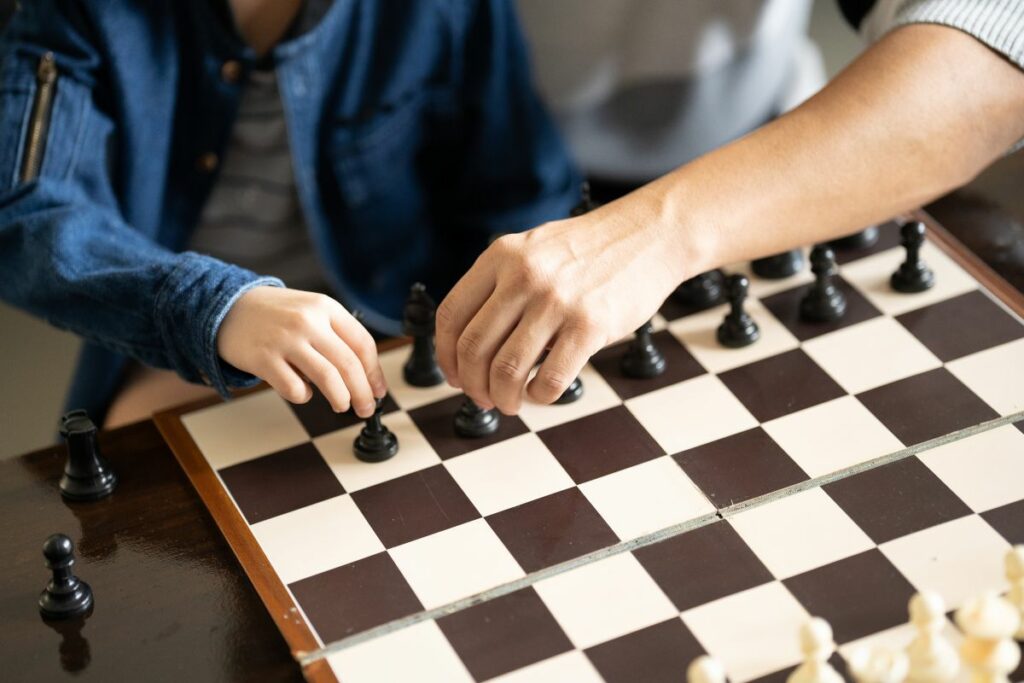
If a player wishes to adjust a piece on the board without enforcing the touch-move rule, they can make use of the “j’adoube” rule. “J’adoube” is a French term meaning “I adjust.” Here’s how a player can adjust a piece without triggering the touch-move rule:
- Announce the intention: Before touching the piece, the player should clearly state “j’adoube” or “I adjust.” This communicates their intention to adjust the piece without initiating a move.
- Gentle adjustment: The player can then gently reposition or adjust the piece on its current square, ensuring its proper alignment or placement on the board.
It’s important to note that the “j’adoube” rule is intended for minor adjustments, such as centering a piece or straightening it on its square. It should not be abused or used to delay the game or gain a strategic advantage.
Excessive or unnecessary adjustments may be seen as unsportsmanlike conduct or stalling tactics. So, it’s advisable for players to be mindful of their use of the “j’adoube” rule and apply it in a respectful manner, maintaining the spirit of fair play and sportsmanship.
Conclusion
Overall, the touch-move rule is of significant importance in chess as it upholds fair play, prevents cheating or manipulation, and adds strategic depth to the game.
By ensuring that players commit to their moves once they physically touch a piece, it maintains the integrity and competitive nature of chess.
If you did find this article helpful, please consider sharing, as it can help this little site grow 🙏



